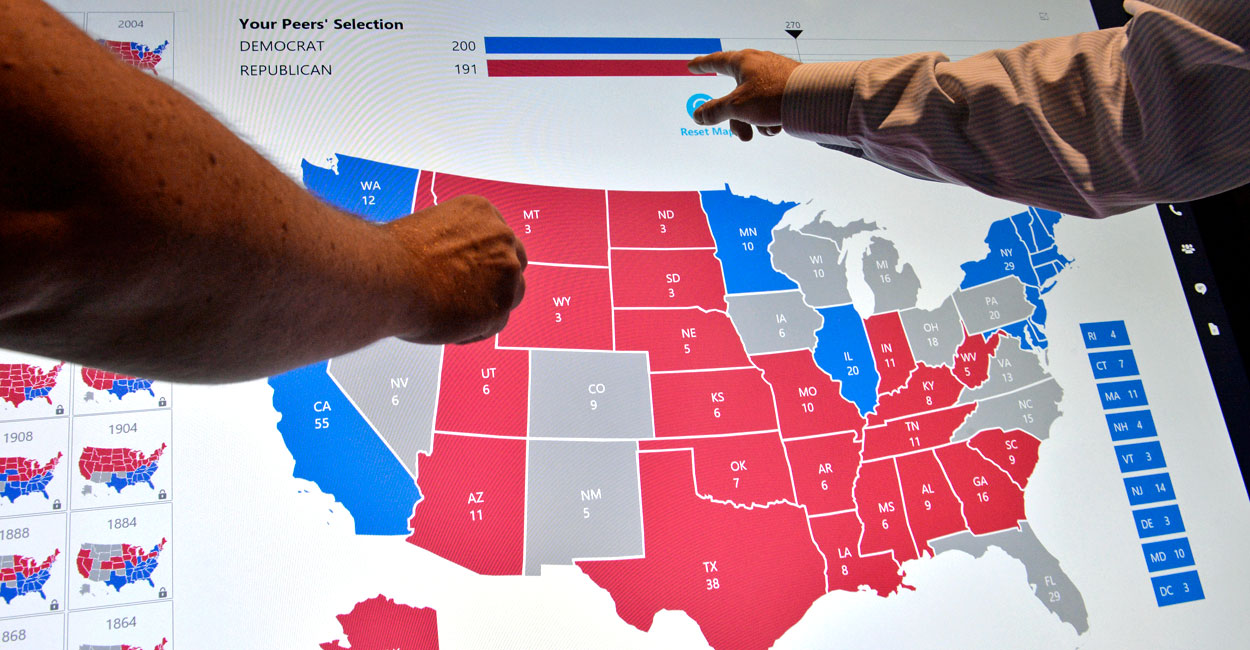Interesting take on what might take place this November when the people decide what to do about who is crazy and who isn't.
There is only one way to find out if Donald Trump is who we actually think he is. What will be he determining factor is unknown for the voting public.
Will it be the country being great again, success breeding success, or will it be something on the network channels that the 'talking heads' believe is happening?
What is the truth? A rising tide that is lifting all boats or don't believe your lying eyes?
There is only one way to find out if Donald Trump is who we actually think he is. What will be he determining factor is unknown for the voting public.
Will it be the country being great again, success breeding success, or will it be something on the network channels that the 'talking heads' believe is happening?
What is the truth? A rising tide that is lifting all boats or don't believe your lying eyes?
Here’s What Wave Elections Have Looked Like Over the Last 100 Years
Will the 2018 elections be a wave against Donald Trump and the Republican Party? It depends upon how you define the word “wave.”
In a recent report I co-authored with political scientist Jacob Smith, Ballotpedia found that since 1918, wave elections occurred when the president’s party lost at least 48 House seats, seven Senate seats, seven gubernatorial seats, and 494 state legislative seats.
We defined wave elections as the 20 percent of elections in the last 100 years where the president’s party lost the most seats. Much like brokers using 20 percent stock fluctuations to determine bear and bull markets, we apply a similar methodology to wave elections. Not everyone will agree, but it provides a framework for furthering a concrete definition about wave elections.
For example, we arrived at 48 House seats by calculating the range of the 11 elections where the president’s party lost the most seats from 1918-2016 and making the lowest number the wave threshold. The range goes from 97 seats lost under Herbert Hoover (Republican) in 1932 to 48 seats lost under Lyndon Johnson (Democrat) in 1966 and Gerald Ford (Republican) in 1974.
Even though the president’s party lost a substantial number of seats in election cycles just outside this range (47 seats in 1958, 33 seats in 1980, and 30 seats in 2006), they are not in the top 20 percent and do not qualify as waves.
We performed similar calculations to determine Senate, gubernatorial, and state legislative waves.
The 10 Senate waves ranged from 13 seats lost under Hoover in 1932 to seven seats lost under Calvin Coolidge in 1926, Ronald Reagan in 1986, and Hoover in 1930. The 11 gubernatorial waves range from 12 seats lost under Richard Nixon in 1970 to seven seats lost under Reagan in 1982 and President Barack Obama in 2010.
The 10 state legislative waves range from 1,022 seats lost under Hoover in 1932 to 494 seats lost under Ike Eisenhower in 1954.
Through this historical context, we provide an objective definition that has often been absent from debates among scholars and election experts about what separates wave elections from run-of-the-mill losses by the president’s party.
We are not dismissing arguments from experts such as Chris Cillizza, Amy Walter, and our co-author Jacob Smith, who look at unexpected wins, toss-up seats, and changes in the political status quo, respectively, to define waves. Our definition means to inform their insights, not replace them.
Furthermore, we intend our report to kick-start a conversation. We propose one methodology, but other tactics can be used to slice the data into waves.
For instance, some political analysts might argue that the data set should start with 1945, after World War II, rather than 1918. If we applied the same 20 percent definition to just the post-1945 elections, waves would occur when the president’s party loses 30 House seats, six Senate seats, five gubernatorial seats, and 344 state legislative seats.
Regardless of the definition, our objective is not to place a litmus test on what language pundits should use when discussing the outcome of the 2018 elections. Instead, we seek to provide historical context about how the president’s party has performed in the past and spark future discussions about wave elections and the forces of political change.


No comments:
Post a Comment